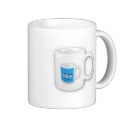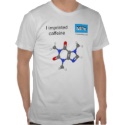|
|
Reference type: Journal
Authors: Díaz-Bao M, Barreiro R, Miranda JM, Cepeda A, Regal P
Article Title: Recent Advances and Uses of Monolithic Columns for the Analysis of Residues and Contaminants in Food.
Publication date: 2015
Journal: Chromatography
Volume: 2
Issue: (1)
Page numbers: 79-95.
DOI: 10.3390/chromatography2010079
Alternative URL: http://www.mdpi.com/2227-9075/2/1/79/htm
Abstract: Monolithic columns are gaining interest as excellent substitutes to conventional particle-packed columns. These columns show higher permeability and lower flow resistance than conventional liquid chromatography columns, providing high-throughput performance, resolution and separation in short run times. Monoliths possess also great potential for the clean-up and preparation of complex mixtures. In situ polymerization inside appropriate supports allows the development of several microextraction formats, such as in-tube solid-phase and pipette tip-based extractions. These techniques using porous monoliths offer several advantages, including miniaturization and on-line coupling with analytical instruments. Additionally, monoliths are ideal support media for imprinting template-specific sites, resulting in the so-called molecularly-imprinted monoliths, with ultra-high selectivity. In this review, time-saving LC columns and preparative applications applied to the analysis of residues and contaminants in food in 2010–2014 are described, focusing on recent improvements in design and with emphasis in automated on-line systems and innovative materials and formats.
Template and target information: Review - monolithic columns for residue analysis in food
Author keywords: monolith, solid-phase, MIP, chromatography, food, residues, contaminants
|


 MIP Workshop World Tour Womens baby doll style shirt
MIP Workshop World Tour Womens baby doll style shirt







 mipdatabase mug in a mug in a mug
mipdatabase mug in a mug in a mug







 I imprinted caffeine ball and stick model shirt
I imprinted caffeine ball and stick model shirt






